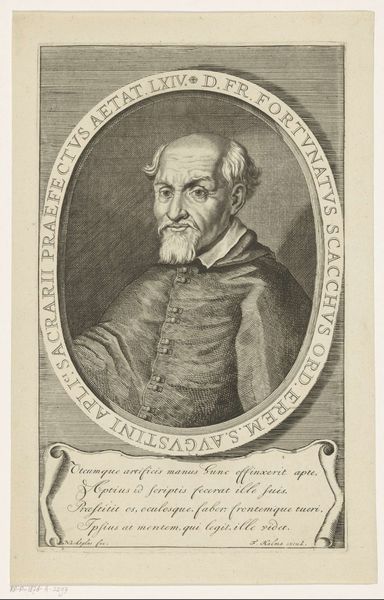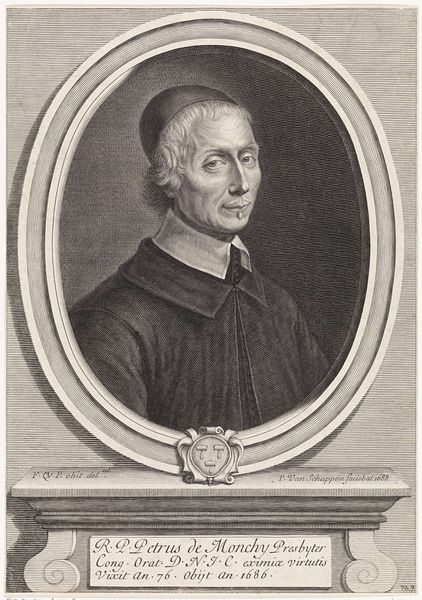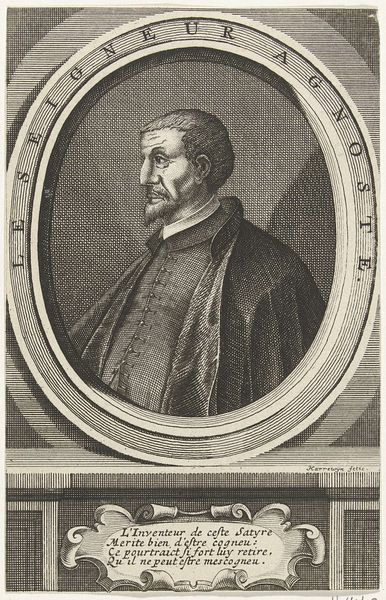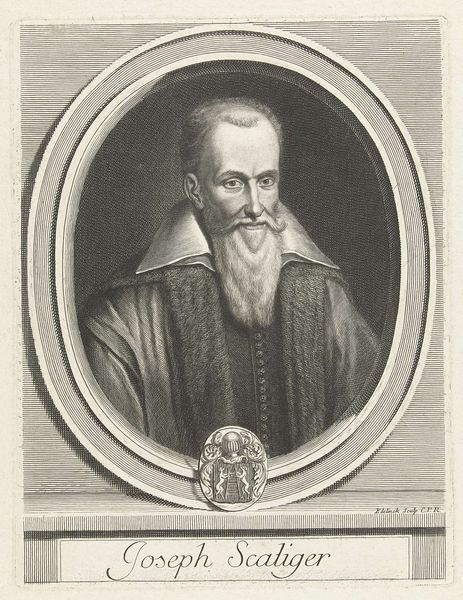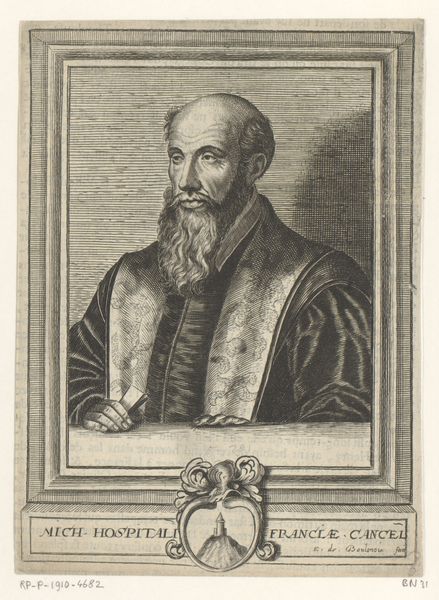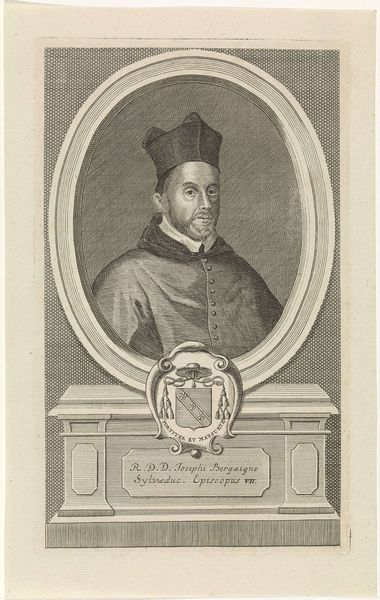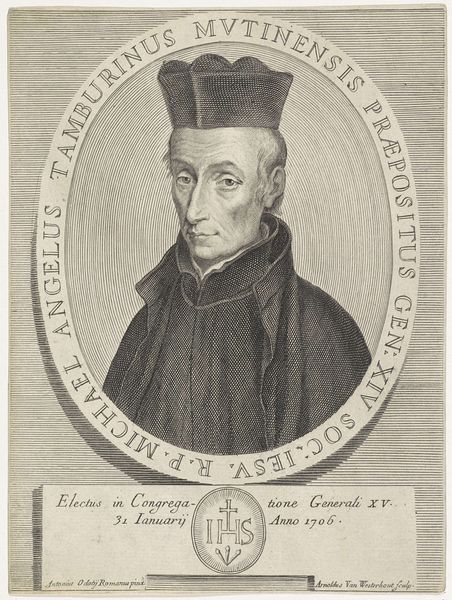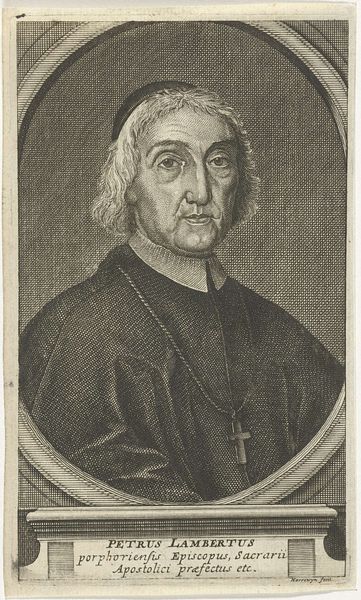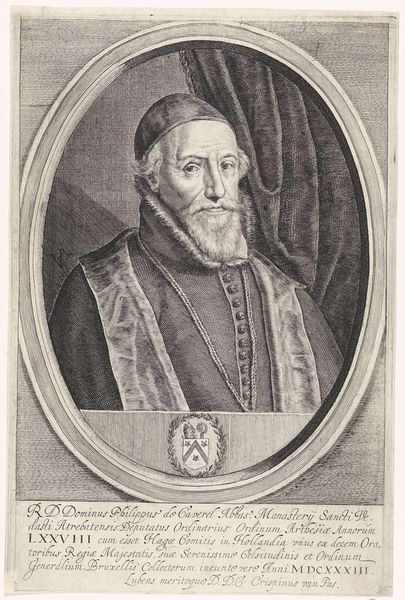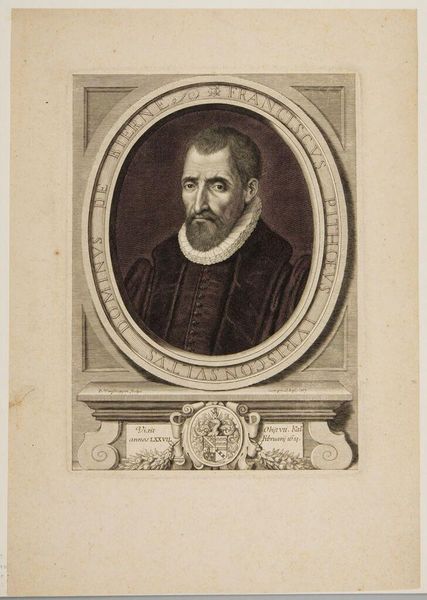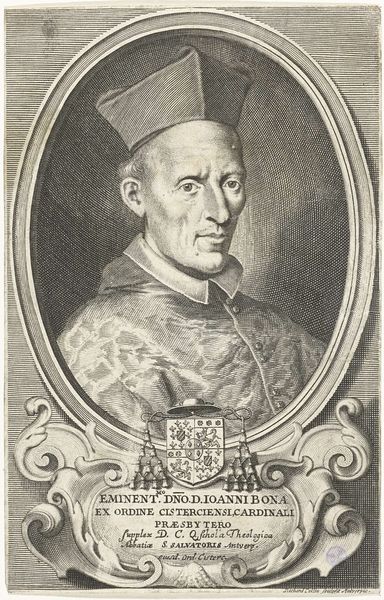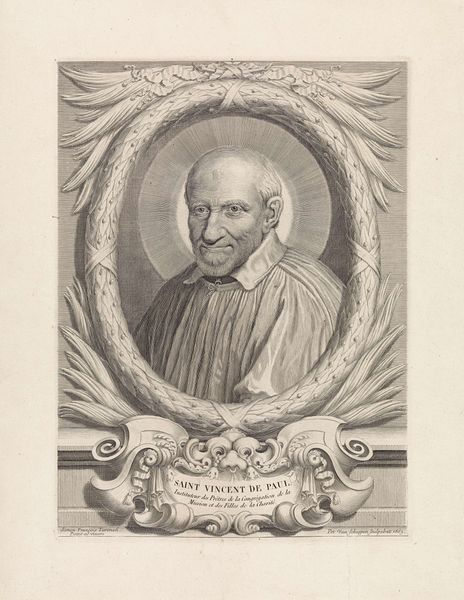
engraving
#
portrait
#
baroque
#
line
#
engraving
Dimensions: height 139 mm, width 80 mm
Copyright: Rijks Museum: Open Domain
Curator: Welcome. Today we’re examining Pieter Sluyter’s "Portret van Denis P\u00e9tau," an engraving dating back to between 1696 and 1713, a captivating portrait residing here at the Rijksmuseum. Editor: Immediately, the lines, etched with such precision, suggest a kind of… austere elegance. It is almost haunting, the way the face emerges. Curator: This engraving reflects the conventions of Baroque portraiture, particularly regarding representing scholars or figures of authority. The clean lines give it a structured form and gravitas. Denis P\u00e9tau was a very influential French Jesuit theologian and chronologist of his time, if that’s any indication. Editor: It’s fascinating how his intellectual gravitas, as you say, seems inseparable from his social position. Look at the way he is framed within that oval, it is an almost symbolic elevation above us as viewers, and further emphasizes this separation by adding an additional frame containing his name. Does this presentation serve to reinforce certain hierarchical social structures? Curator: Undoubtedly. The medium itself – engraving – lent itself to reproducibility, so images like this would circulate amongst the intelligentsia of the period, almost like celebrity endorsements of today. P\u00e9tau was a towering figure in intellectual circles. His presence in these circulated images would solidify that social position that we’ve described. Editor: And let’s not ignore the use of light and shadow here. While seemingly simple, the artist uses this tool to great effect and adds emotional depth to the representation. Are we meant to perceive some internal conflict or an almost existential pondering etched onto his very face? Curator: That's a provocative interpretation, however one may read such “conflict” as an indication of intellect or sophistication for potential clients or other learned onlookers during the Baroque era. Editor: Perhaps you’re right. It could be a display. But I also wonder about the implicit power dynamics. Does Sluyter capture P\u00e9tau, or does P\u00e9tau, in his status, in some way define the very limits of this portrayal? Curator: An interesting perspective. Editor: Yes, the tension between representation and self-representation. Food for thought, isn’t it?
Comments
No comments
Be the first to comment and join the conversation on the ultimate creative platform.
